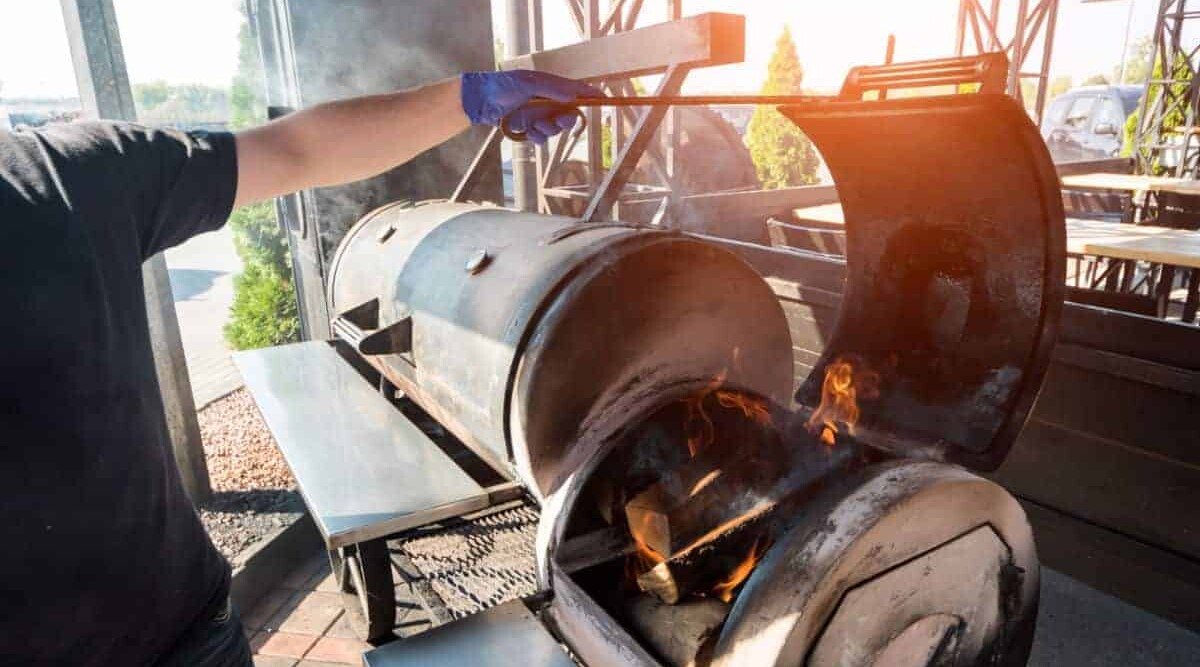
I’ve been where you are now, standing in front of a dizzying array of different types of smokers, trying to decide which to buy that will suit my needs. Well, luckily for you, I kind of bought them all!
At the time of writing, I own more than 30 grills and smokers, and have owned at least double that over the previous two decades. It comes with owning and running a BBQ-centric website testing and reviewing equipment.
I’ve spent countless hours experimenting with different types of smokers, I’ve lit the fires, I’ve tended the coals, and I’ve savored the results. I have learned most types inside out, and I know the pros and cons of each type learned through actual use. I will now use this knowledge to help you decide which type of smoker is right for you.
In this article, we’ll explore the ins and outs of pellet smokers, electric smokers, charcoal smokers, kamado smokers, and several other popular models. You’ll learn about each type’s inner workings, benefits, and potential drawbacks, helping you match your preferences and lifestyle with the ideal smoking kit.
Whether you’re looking for convenience, flavor, or versatility, in a small or large package, there’s a smoker out there perfectly tailored to your needs. So, let’s get into the details.
Note: We have a companion guide to the different types of grills that you might also be interested in.
Jump to:
Types of Smokers Comparison Table
Here’s an at a glance comparison table of all the different types of smokers available. For details above and beyond this side by side comparison, we’ve got you covered with the rest of the article below.
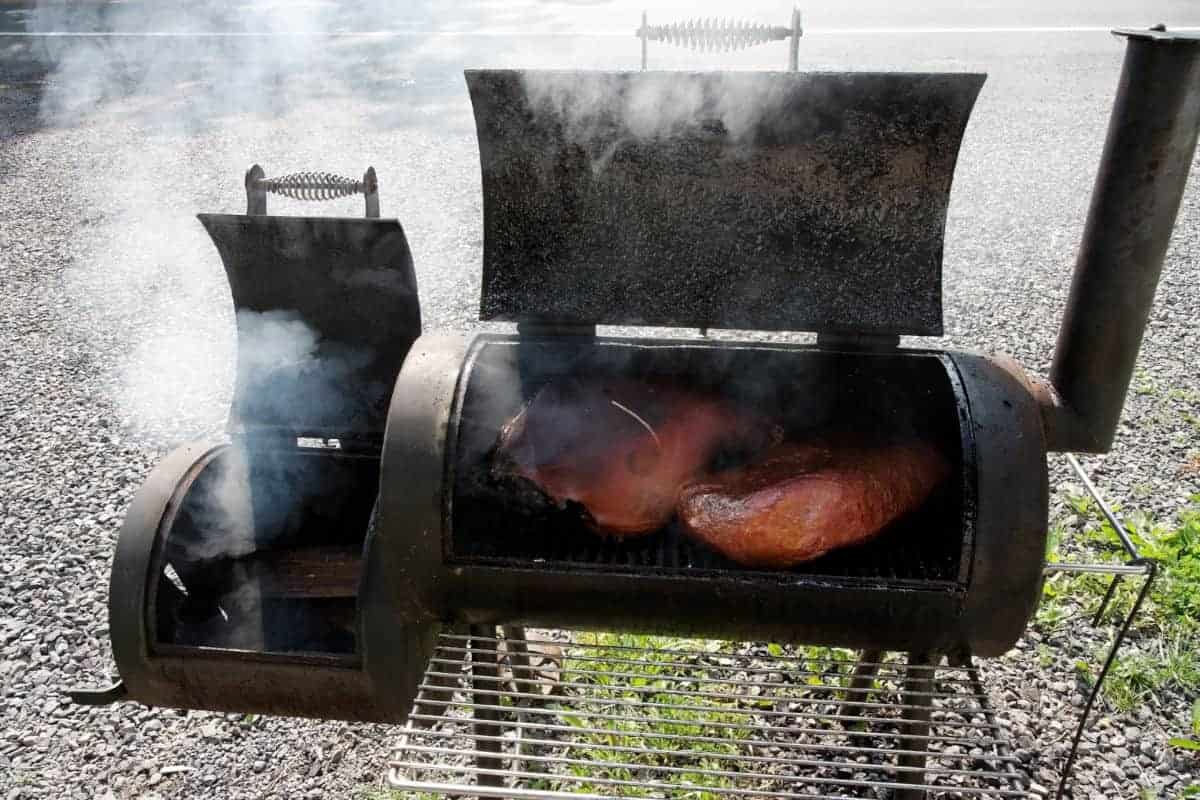
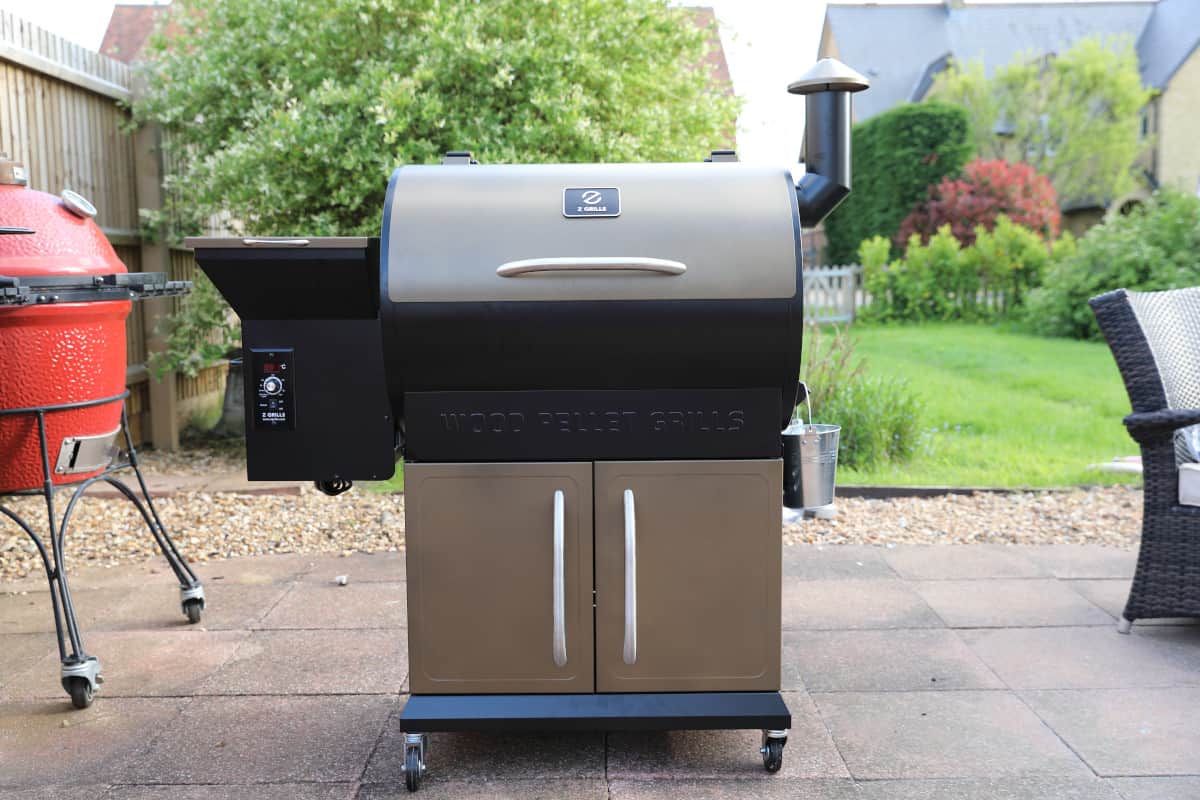
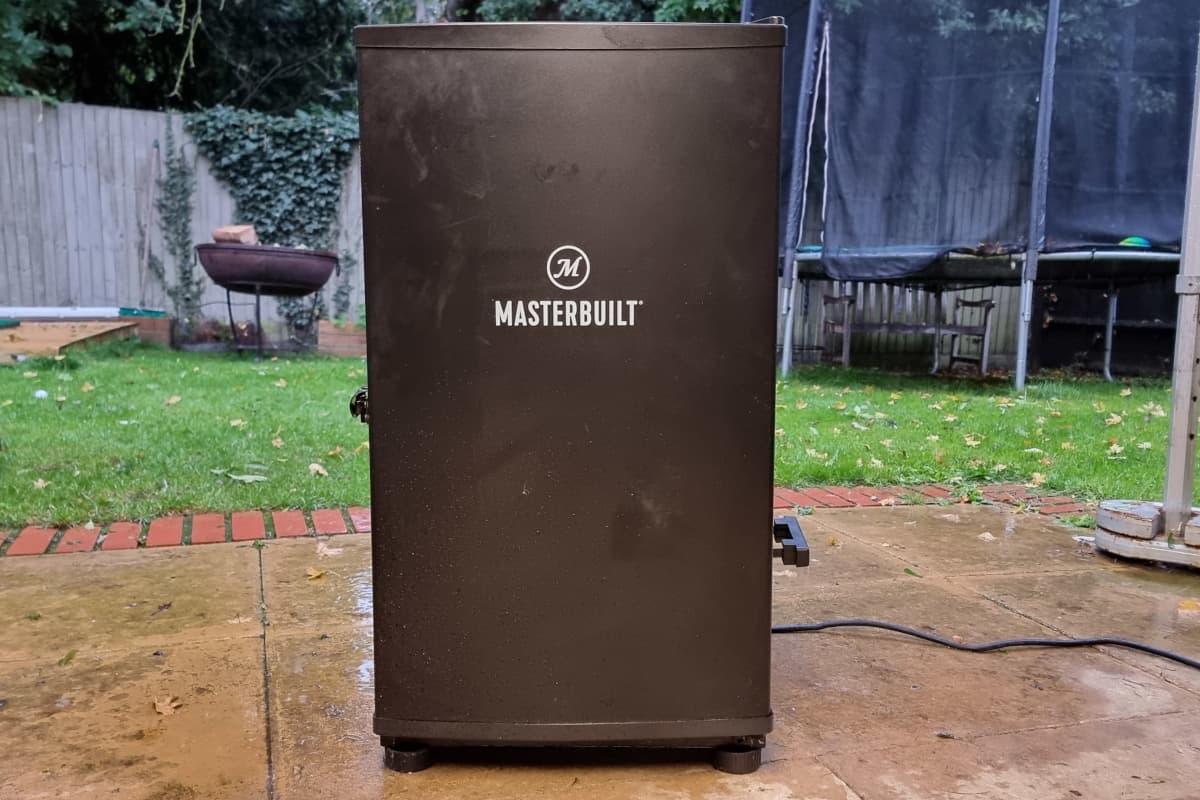
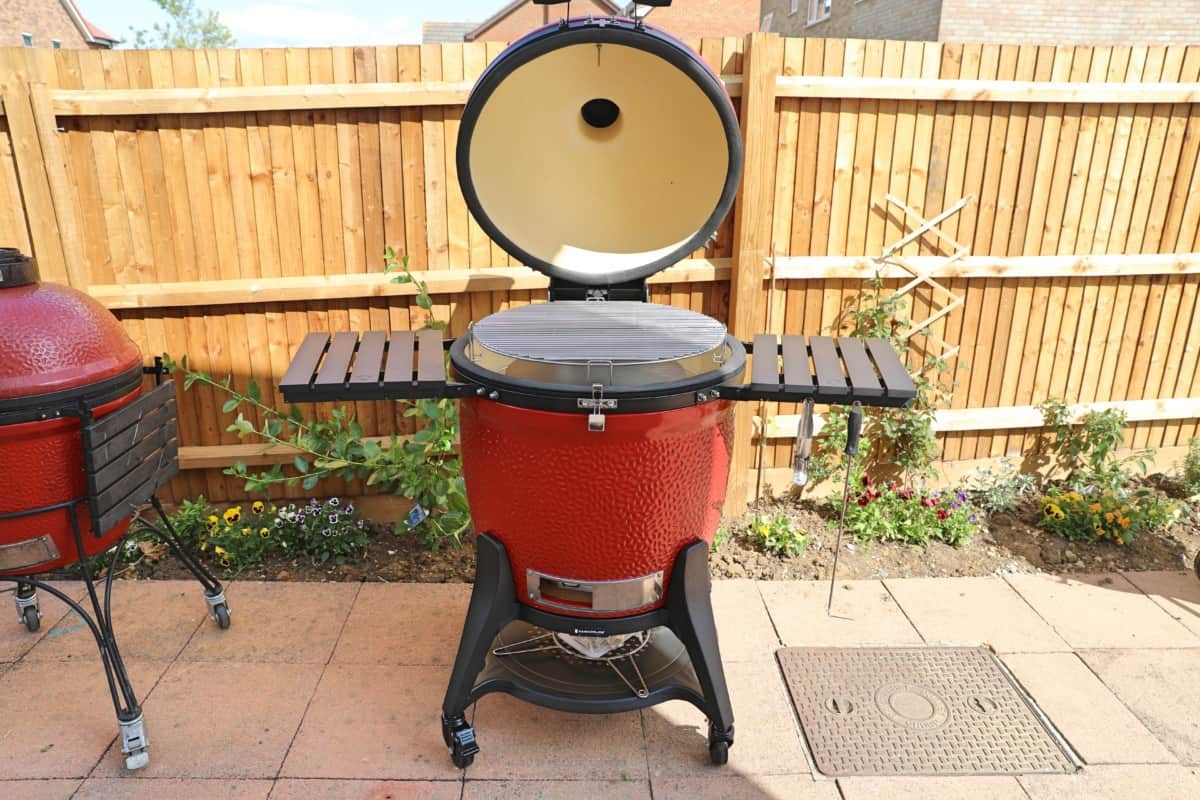
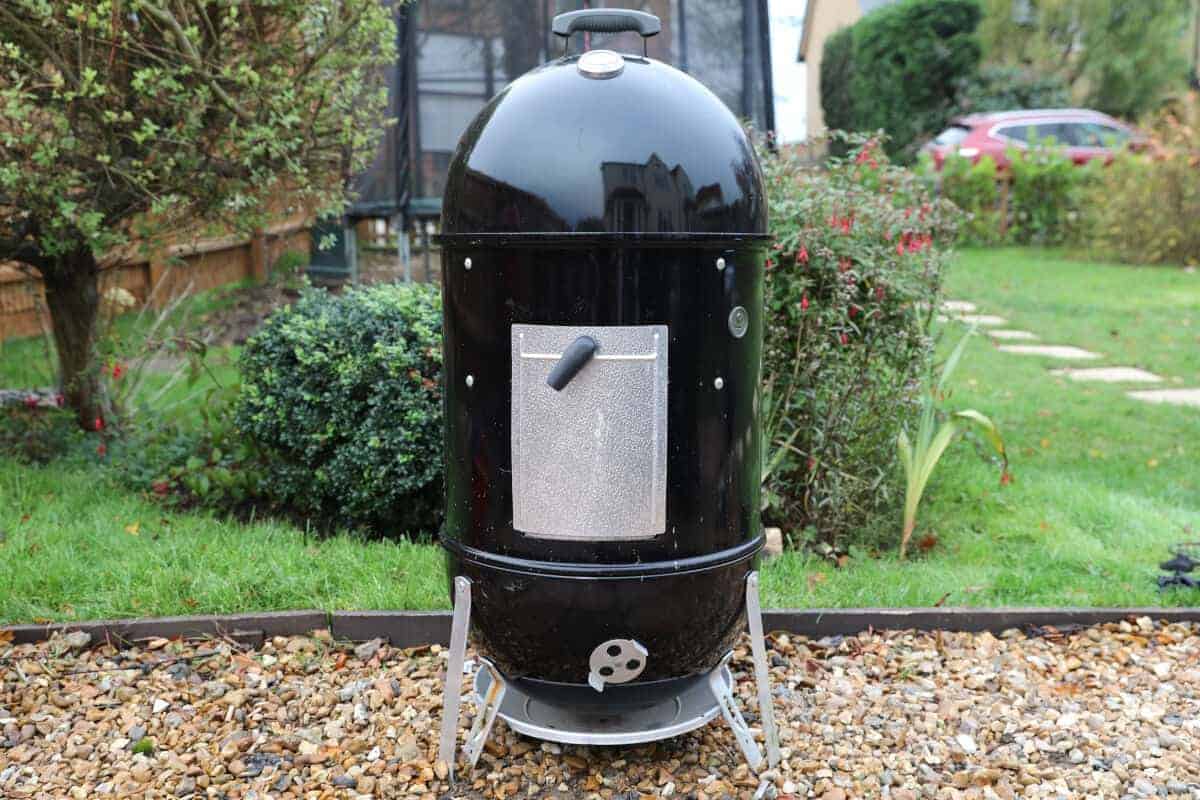
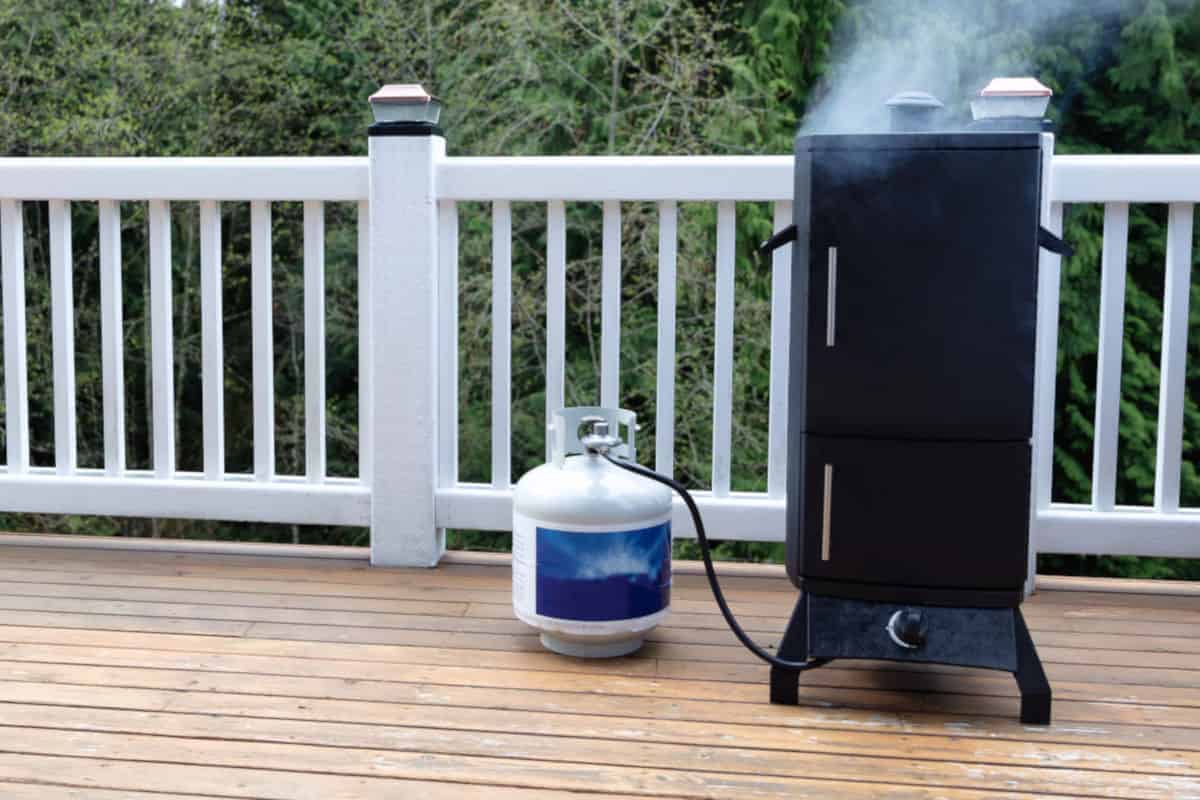
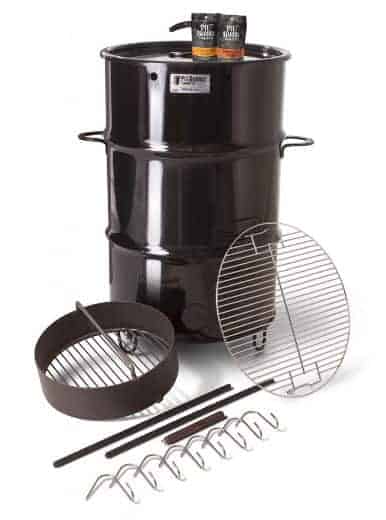
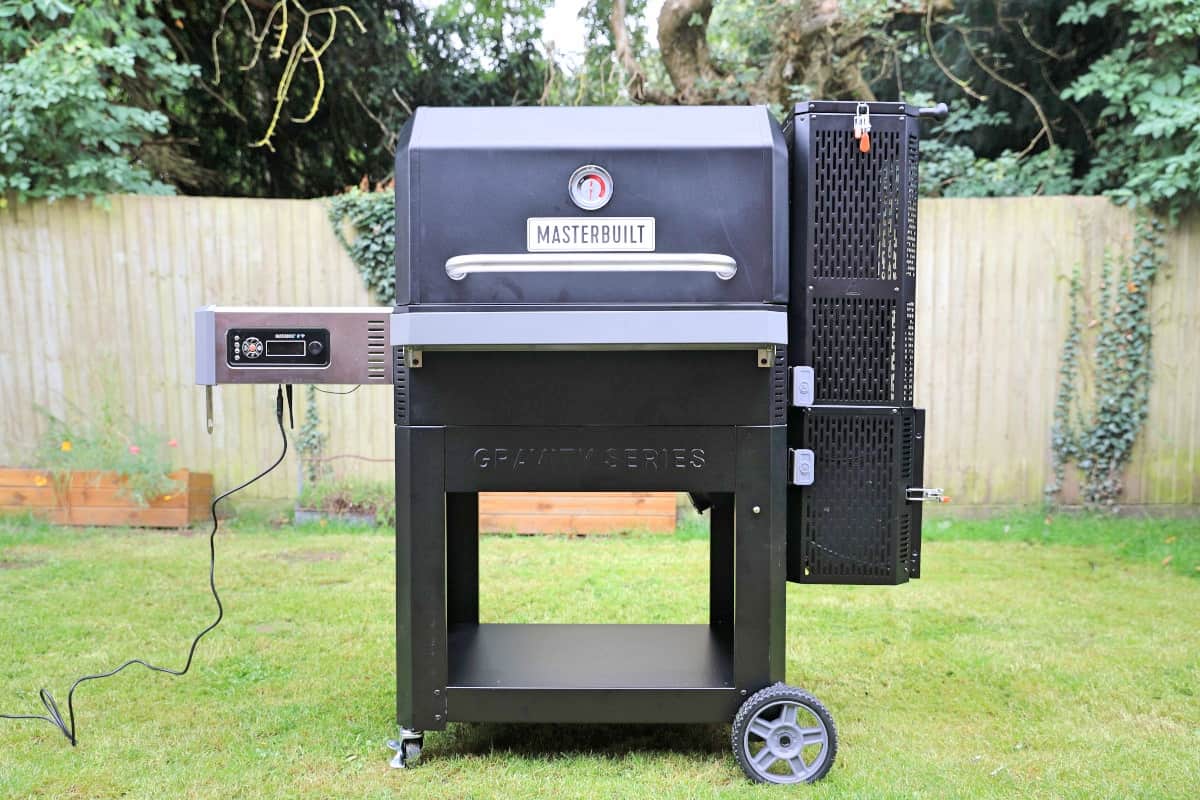
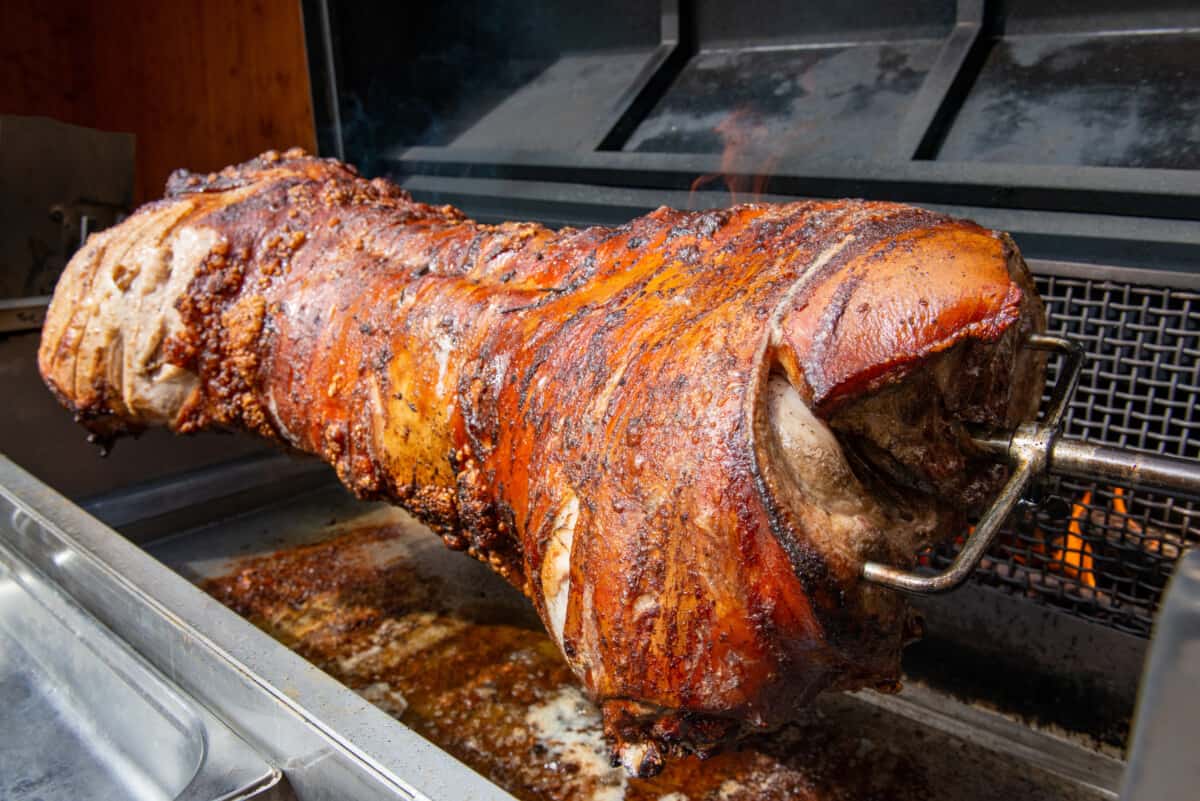
Types of Smokers, How they Work, Their Pros and Cons
For the rest of this article we list and discuss 10 different types of smokers, how they look, what fuel they use, how they work, and the pros and cons of each type compared to others that are available. All this so you can decide which type is best for you.
Offset Smokers
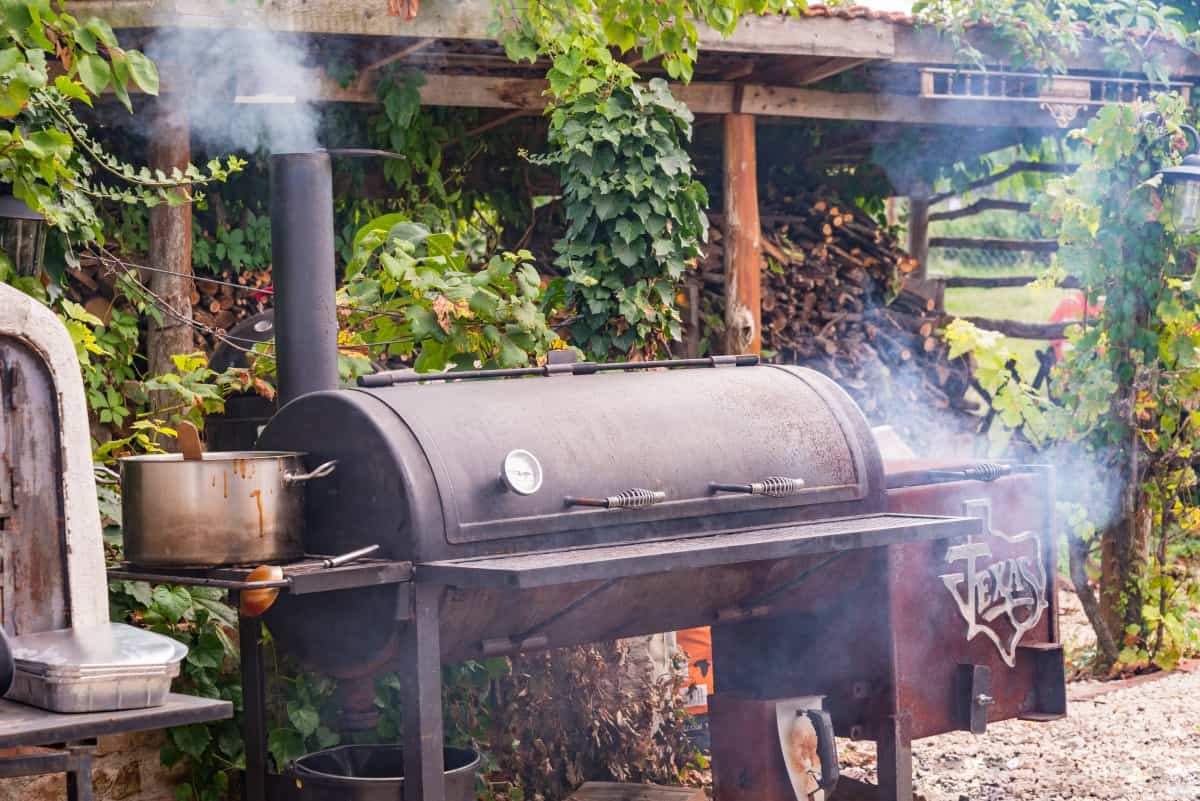
Offset smokers have been made popular by shows like BBQ Pitmaster’s and are what world-renowned James Beard Award-winning Pitmaster Aaron Franklin uses to cook much of the food he serves at his restaurant. But be forewarned — not all offset smokers are created equal!
Offset smokers were traditionally homemade using retired propane tanks and scrap metal. The tank is turned on its side and fit into a stand. Pieces are cut out to make doors and re-installed with hinges and handles, cooking grates are fitted in the tank, a smokestack is installed, and a firebox is welded onto the side.
The fire is fueled by whole logs of wood and heats the propane tank while the smoke from the fire adds flavor to the meat.
There are many manufacturers out there who design this type of smoker. As New York Times Bestselling Author Meathead of AmazingRibs.com explains, they can be broken down into two categories:
- Expensive Offset Smokers ($800 and up)
- Cheap Offset Smokers ($800 and under).
The Cheapo Offset Smokers can commonly be found at your local hardware or big box store for around $100 to $300, and while they may look manly and cool they can be a big disappointment.
Their metal is thin and does not retain heat. The doors do not seal well and heat and smoke escapes, as well making them VERY fuel hungry and inefficient, and highly affected by the wind and rain. The legs rust out quickly, and after 12 months outdoors, the whole works could end up in the garbage.
An Expensive Offset Smoker, on the other hand, is none of these things.
It’s made of thick metal that absorbs and carries the heat throughout the cooking chamber. The doors and dampers fit tight and give a good seal, so that heat and smoke doesn’t escape.
They are well-made, big and heavy, built to last and after mastering fire management can be used to reach and maintain steady temperatures with ease, in all sorts of weather.
Pros
- Large food capacity ideal for big families, big events, or commercial use.
- Delivers unique, traditional smoky flavor unmatched by other smokers.
- An expensive offset will last many years if well looked after.
- Again, an expensive model will be able to hold heat easily with its thick metal building materials.
- The ‘manliness factor’ is cranked up to 11.
Cons
- For a good one, the high cost could strain your budget.
- Considered one of the harder smokers to master. You need to learn very good fire control.
- Cheap offset smokers aren’t well-built and will not last, are a pain to use and can put people off smoking. (Doesn’t apply to high-quality versions!)
- Require a lot of babysitting and monitoring. May have to add fuel every hour. Overnight smoke is going to be out of the question unless you don’t mind not sleeping.
- Cheap offsets sold by big box stores will likely come with a less than stellar warranty. Unlikely the big box store will handle any claims or stock spare parts.
Who are Offset Smokers Most Suited to?
Offset smokers are an excellent choice for those who appreciate traditional smoking methods and are happy to spend time gaining expertise in controlling temperature and smoke. You need to want a more hands-on approach to smoking to enjoy offset smokers because they require constant attention.
However, the authenticity is dialed up to 11. The process of managing the cook on an offset, combined with the unique flavors achieved from cooking solely over wood smoke, creates a truly traditional barbeque experience.
Their spacious cooking chambers also make them perfectly suited for large-scale smoking operations. It is a fantastic option for people looking to smoke large amounts for many hungry mouths.
And wow, do they look incredible! Whenever I see an offset smoker, it turns my head with envy. They really do look ‘all the cool.’
Pellet Smokers
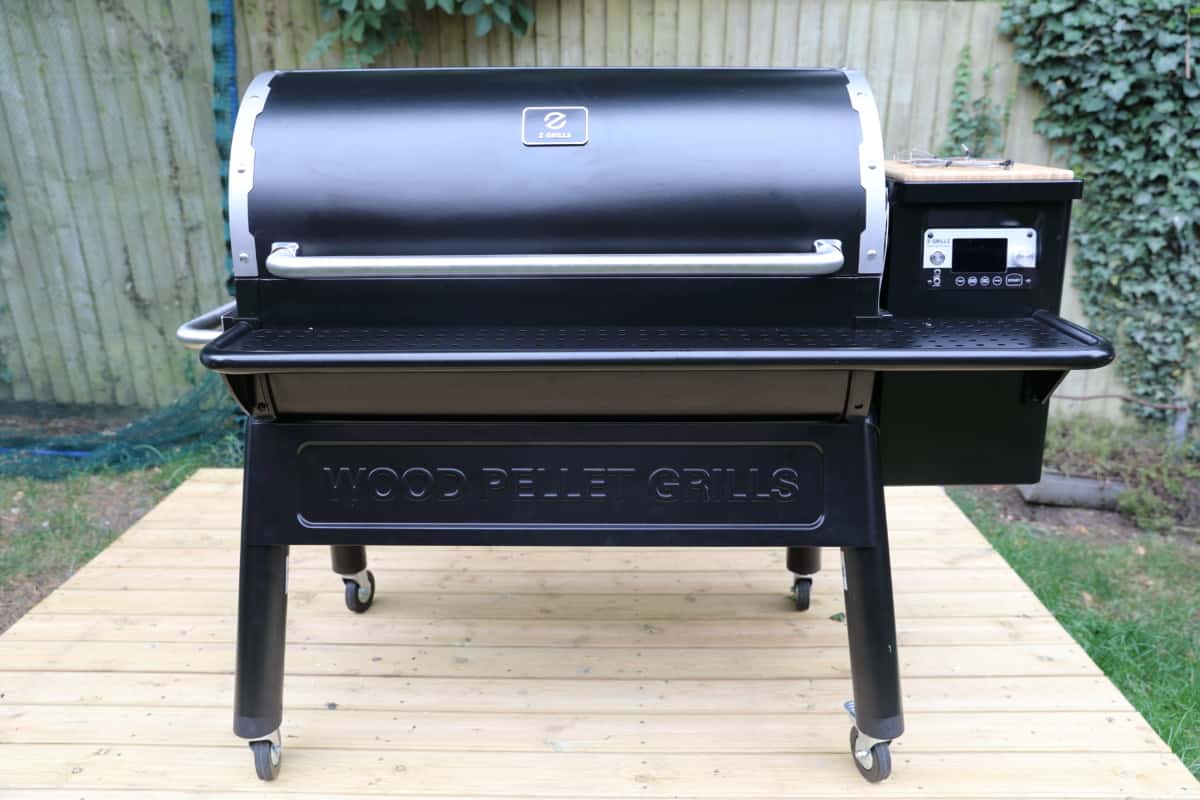
Pellet smokers tend to look similar to the offset smokers discussed before. The major difference is that these are a lot more high tech!
Pellet smokers are true “set it and forget it” cookers. Let’s look at how a pellet grill works.
They run on electricity and have a thermometer with temperature controller inside the cooking chamber. You set your temperature, and the electronics hold it steady to that temp, so it operates similarly to an oven.
A hopper replaces the firebox you would find on an offset smoker. You fill the hopper with food-grade smoking pellets made from compressed sawdust. You can think of the pellets like mini-logs. These pellets are fed by an auger from the hopper to a small firebox inside the smoker, and a metal rod inside the firebox heats up and ignites the pellets.
From here, the electronically controlled thermostat regulates the speed the auger feeds the fire box, controlling the cooking temperature in the grill. And of course, smoke from the burning pellets flavors the food beautifully.
Pros
- Simple setup and automated temperature control means ultimate ease of use.
- Versatile for grilling, smoking, baking, and roasting.
- Efficiently handles large quantities of food.
- Customizable smoking experience due to various pellet flavors.
- Subtle smoke flavor compared to other smoker types.
- Ideal for beginners with ‘set it and forget it’ functionality.
Cons
- One of the more expensive options on this list.
- Lots of moving parts that could potentially fail.
- Electricity dependence limits portability and use in power-free zones.
- Subtle smoke flavor may not satisfy those seeking a strong smoky taste.
Who are Pellet Smokers Most Suited to?
For beginners venturing into the world of outdoor cooking, pellet smokers are an excellent starting point. Their ease of use and automated features make the smoking process less intimidating and more accessible.
Tech-savvy barbecue enthusiasts will also find pellet smokers appealing. Almost all models come with digital controls and Wi-Fi connectivity these days, offering a modern touch to the traditional smoking process. You can monitor and control them from a smartphone app on the golf course.
Lastly, if you prefer a set-and-forget smoking style, pellet smokers are a suitable choice. Once the temperature is set, these smokers take care of the rest, giving you more time to focus on other tasks or to simply relax.
Electric Smokers

These types of smokers are the epitome of set it and forget it technology. No charcoal to light, no need to monitor the amount of propane in the tank or charcoal left in the smoker, no ash to clean after it’s all said and done.
The operation is straightforward and effortless. Typically, you have an electric heating element with a plate above to place wood chunks or wood chips. The element heats up and does two things: heats the smoker to the correct temp, and causes the wood to smolder and create smoke.
Like many smokers, there are high-end electric smokers, and there are low-end electric smokers.
The higher end units have a thermostat inside that regulates the desired temp, while lower-end units simply have a dial. The higher up on the dial, the hotter it is going to be inside, but there’s no actual temp markings, just low to high, and it can vary depending on weather and other factors.
Pros
- Come in different sizes; smaller units are perfect for cooking for the family and larger units that can feed a crowd.
- Small footprint means it takes up less space on your patio.
- Straightforward to use, ideal for beginners.
- Provide stable temperature and smoke levels for extended periods.
- You can control the temperature precisely at the turn of dial or click of a button.
- They don’t need constant attention or tweaks.
- Cleaner, producing less ash, so far easier to clean.
Cons
- While high-end units can be well made, cheaper units found in your hardware store may not be.
- Cheaper units don’t hold heat well, leak smoke, making them hard to get consistent results.
- Do not produce as much smoke as other types, resulting in milder flavors.
- Temperature range not as wide, which can limit the variety of foods you can smoke.
Who are Electric Smokers Most Suited to?
Electric smokers offer simplicity and ease, making them an excellent choice for beginners. Their straightforward operation eliminates the learning curve, letting you focus on the flavors and recipes.
These smokers are ideal for those who enjoy a low maintenance cooking experience. They require minimal monitoring and provide a ‘set it and forget it’ approach to BBQ.
Also, I remember moving into an apartment with limited outdoor space years ago. The prospect of smoking meat seemed impossible, given the restrictions. That’s until I bought an electric smoker. Their compact design and reduced smoke output meant I could enjoy smoked dishes without disturbing my neighbors or violating any housing rules.
Finally, if you’re someone who prefers a mild smoke flavor, these smokers might be right up your alley. Unlike charcoal or wood smokers, electric smokers produce a less intense smoke taste. It’s subtle but still noticeable, perfect for those who enjoy a hint of smokiness in their food. But for this reason, they aren’t ideal for those who like a pronounced smoky taste in their food. Charcoal and wood-fueled smokers have a far better overall taste, in my experience.
Kamado Ceramic Smokers (Charcoal)

I feel it’s important to point out that Kamado grills come in all shapes and sizes, and that they aren’t always equal.
A quality Kamado is well-built, comes with a good warranty, and quite frankly — is expensive. The cheap knock-offs you find in many big box stores are simply imitations that will not work as well, and will not last as long.
A Kamado grill is typically made of ceramic, a material that is highly insulating and once ‘heat soaked’ (brought up to temperature) will allow you to maintain steady low temps for a very long period of time.
They can also get to searing hot temperatures well over 700F, and at these temps, you can easily make pizzas, or give your meat a steakhouse quality sear.
When you want to smoke in your Kamado, you will load your firebox with a quality lump charcoal and wood chunks, and then use a lighter cube or electric fire starter to light your charcoal.
There is a removable ‘heat deflector’ that sits between the fire box and the grill grate, this way you’re easily able to set up a kamado as a complete, indirect low n slow cooker, with no flames on your food and no fat falling onto the fire.
When desired, you can remove the heat deflectors for direct heat cooking, much like an ordinary grill.
Dampers/vents on the top and bottom allow you to regulate air flow through the kamado, which means you can really dial into and hold steady any temperature you need.
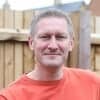
My favorite Kamado, the one I own and use more than any other cooker is the Kamado Joe classic. It tops our list of ‘best charcoal smokers‘ and is a great all-rounder for grilling, smoking, roasting, baking and more. Admittedly, other models dedicated to a single task such as ONLY grilling, or ONLY smoking, may well do their sole purpose better, but as a Swiss army knife of outdoor cooking that can do everything, is fuel efficient, easy-to-use and turns out fantastic food, you cannot go wrong with a Kamado Joe. You can read our full review here if interested.
— Mark Jenner
There are several manufacturers of Kamado grills, and there are also several different sizes. An 18″ diameter Kamado is large enough to cook 2 – 3 10-pound pork shoulders, but obviously a larger Kamado could cook more, and a smaller would cook less.
I actually now own all 3 sizes of Kamado Joe, the Junior, Classic and Big Joe. I recommend the medium-sized Classic 18″ the most, because the Juniors small size makes it lose a lot of versatility, whereas the Bog Joe is so big, is not as fuel efficient as the Classic, and just a bit overkill for most needs.
Pros
- Can be set up to smoke, grill, sear, roast, bake or make pizzas, so it’s a true ‘all in one’ multi-purpose cooker.
- Extremely well-built and durable. Will last many years if looked after.
- Can easily hold temperature for long periods of time with little work.
- Compact, will not take up much space on patio.
Cons
- Not cheap, one of the more expensive options on this list.
- While durable enough to withstand mother nature on your patio, ceramic will still break if the grill falls or is knocked over on the patio.
- If preheating the Kamado and you overshoot your desired temp, it can take a long time to get the temp back down to your desired temperature. So there’s a learning curve to go through.
Who are Kamado Smokers Most Suited to?
Kamado ceramic smokers are best suited to those who value versatility in their outdoor cooking. Their ability to grill, roast, bake, and smoke offers a range of options almost unrivalled by any other type of BBQ.
These smokers also appeal to people who appreciate the unique, rich flavor that comes from cooking with charcoal combined with the moist cooking environment maintained by the airtight ceramic construction.
These smokers aren’t the cheapest option on the market, but they’re perfect for people who don’t mind investing a bit more initially for a smoker that’s durable and long-lasting. And they are fuel efficient so your up front investment saves money over time.
And if you’re someone who prefers a traditional, hands-on approach to smoking and grilling, these smokers are definitely for you. They offer a more involved cooking experience than some other types of smokers.
Click here to browse our roundup and reviews of some of the best kamado grills on the market.
Vertical Water or Bullet Smokers (Charcoal)

One of the most prolifically owned charcoal smokers because many beginners start out with a bullet smoker, typically the Weber Smokey Mountain.
They are nice and compact, have a small footprint so can fit onto the smallest of patios, have no mechanical or electrical parts and are relatively easy-to-use. They get their name due to their bullet-like shape.
Sometimes also known as ‘vertical water smokers’, these are fueled by charcoal and wood chunks in the bottom, a water pan sits above the charcoal to create an even distribution of heat, catch the dripping fat, and help create a moist cooking environment.
The meat would go on racks above the water pans and a lid would go on top. Vents on both top and bottom can be open and closed to regulate air flow and temperature.
While many different manufacturers make different size bullet smokers, they’re all relatively small and would best be used to feed family and friends.
A smoker this size would comfortably fit 2 – 4 10-pound pork shoulders or 8 – 10 racks of baby back ribs (with rib racks).
Pros
- Compact, will not take up much space on patio.
- One of the most inexpensive types of smoker on this list.
- Easy to learn how to use.
- Can be found in your local hardware or big box store or online.
- Highly portable design and size that can easily be transported in a truck, or even broken down (with ashes removed) and transported in the trunk of your car.
- Moist cooking environment keeps meat juicy.
- Economical due to less fuel requirement.
Cons
- Small cooking capacity.
- Water pan can get greasy and will have to be cleaned after every cook.
- Primarily a dedicated smoker.
- Performance affected by wind and weather.
Who are Bullet Smokers Most Suited to?
If you’re just starting your journey into outdoor cooking, vertical water or bullet smokers could be a great choice due to their simplicity and affordability. And their compact design makes them ideal for those who have limited space, as they occupy a small area.
Bullet smokers excel in providing moistness when it comes to the quality of smoked foods. This is because the water pan maintains a humid environment within the smoker. So, if you prioritize juicy, succulent smoked foods, this type of smoker would be ideal for you.
Bullet smokers are also excellent for individuals who prefer a hands-on smoking experience. They require regular temperature and water level checks, offering an engaging and active cooking process.
Portability is another advantage of bullet smokers. Generally lightweight and easy to move, they’re perfect for those who enjoy taking their barbecue skills on the road.
You can learn more about this type in our weber smokey mountain review.
Gas Smokers

Gas smokers are similar in both style and functionality as the electric smoker mentioned above. Instead of an electric element generating heat and causing the wood to smolder, a gas burner does this work.
There is no thermostat found in these smokers. You may have a bimetal thermometer on the door of the smoker you can use to gauge temp. You may need to play with your smoker for a little while to dial in the desired cooking temp, but it’s no more difficult than turning the gas knob.
This type of grill is commonly found in your local hardware or big box store.
Pros
- Like their electric counterparts, these smokers come in different sizes.
- Small footprint means it takes up less space on your patio.
- Very simple to use, just turn the gas up or down to raise or lower your temp
- One of the cheaper options on this list.
- Heats up fast and keeps temperature steady.
- User-friendly, great for beginners.
- Burns clean, producing minimal ash and residue.
Cons
- Cheaper units are typically not very well-made.
- Fuel is propane, so you’re going to want to have a spare tank ready to go for long smokes.
- Less smoky flavor compared to charcoal/wood smokers.
Who are Gas Smokers Most Suited to?
Gas smokers are the go-to choice for individuals who prioritize convenience and speed in their cooking. If you often need to cook large quantities of food quickly, a gas smoker is an ideal match as they heat up rapidly and maintain stable temperatures. This makes them a practical choice for both beginners and seasoned grillers.
If you’re someone who doesn’t enjoy the maintenance and cleanup that comes with some other types of smokers, you’ll appreciate the simplicity of gas smokers. They’re known for being easy to keep clean and maintain.
Finally, cost-effectiveness is a key attraction of gas smokers. They have maximum budget-friendliness, with gas being far cheaper than charcoal, wood, or pellets.
Ugly Drum Smokers
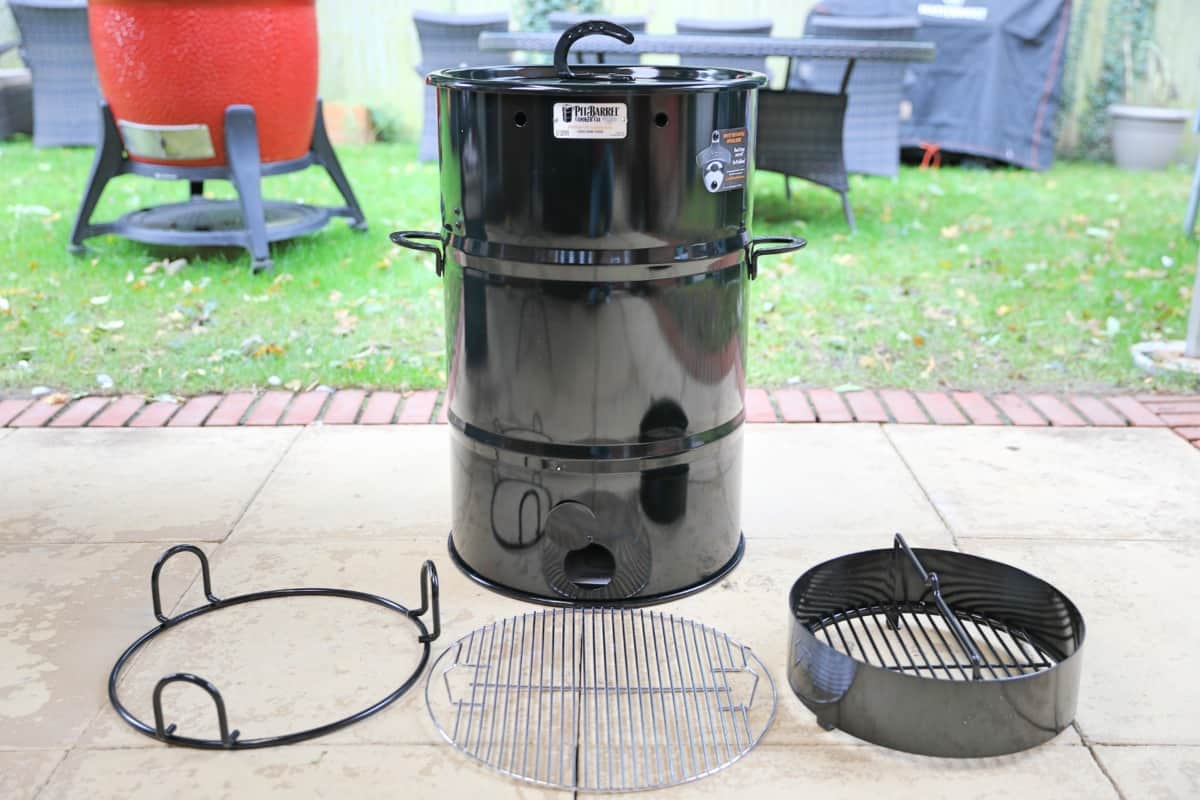
Also known as the UDS, this category of smoker is about as simple as it gets.
A basket is placed at the bottom of the drum and loaded with charcoal and wood chunks. A grill grate sits about a foot higher above the charcoal basket, and the lid goes back on top of the barrel. Vents are placed down by the charcoal basket and on the lid to control the temperature.
Because of their simple design and few parts, many people build ugly drum smokers themselves. For a complete “how-to,” check out these great instructions from John Thomas, the creator, and blogger behind Grilling 24×7.
There are other, more polished looking ugly drum smokers that can be purchased already made.
In addition to its simple design, an ugly drum smoker is easy-to-use too.
Load up the charcoal basket, add some lit charcoal and wood chunks, add your meat, and dial in the desired cooking temp with the vents.
Since it has such a compact design, there is very little airflow and little oxygen inside the drum. Many people claim to be able to use their UDS for up to 12 hours without having to add charcoal.
As far as capacity, a UDS can easily cook 4x 10-pound pork shoulders at one time.
Pros
- Compact, will not take up much space on patio.
- Can be easily built at home with short parts list, quite possibly the cheapest smoker there is to own.
- Can easily hold temperature for long periods of time with little work.
- Easy to learn how to use.
- Can be used as a grill. Instead of adding some lit charcoal to a basket of unlit charcoal, simply light a full chimney of charcoal to cook with.
Cons
- They’re called ugly drum smokers for a reason! Homemade smokers may not have the same fit and polish of a shiny new smoker.
- Accessing food during cooking is challenging due to design.
- Limited cooking capacity.
Who are Drum Smokers Most Suited to?
Ugly Drum Smokers are a great fit for barbecue enthusiasts who revel in the DIY aspect of smoking, given they are often homemade. If you’re on a budget but still desire a high-capacity smoker, these are an excellent choice.
For those in search of a strong smoky flavor, Ugly Drum Smokers are your go-to. They produce a distinct and robust smoky flavor that aficionados will appreciate. However, bear in mind that these smokers are best suited for those with plenty of outdoor space. They require good ventilation and can create a substantial amount of smoke.
Manual temperature control and monitoring are necessary when using Ugly Drum Smokers. So, if you don’t mind keeping a close eye on your smoker to ensure optimal results, these could be the right fit for you.
Gravity Fed Smokers

While these smokers may look similar to pellet smokers described above, they are in fact very different.
Rather than the charcoal and firebox being beneath the cooking chamber, there is a coal chute on the side that’s filled with charcoal to provide a constant, steady supply of fuel. These smokers are almost always very well constructed with a lot of insulation in both the coal chute and cooking chamber.
Designed to be a set it and forget it style of smoker, they are insulated well and are sealed tight with the only way for oxygen to get into the smoker by vents at the bottom of the coal chute. They also have exhaust at the top of the cooking chamber.
The charcoal can burn in a low-oxygen environment and not ignite the entire chute. The exhaust stack then draws the smoke through into the cooking chamber, over and around the food and then out of the cooker.
Pros
- Very good construction.
- Many different sizes, can be small backyard unit to cook for friends and family, and can be large unit to be used by caterers.
- Even the smallest units are enough to fit large cuts of meat like brisket or even a turkey on.
- Due to the low oxygen being able to get into the fire, and the thick insulation, this unit is a set it and forget it type of smoker, holding temps for up to 12 hours easily.
Cons
- Even the smallest units are very large and heavy. Only meant for the die-hard backyard BBQers.
- Charcoal can get stuck in the chute and not drop down as needed, causing the temp to go down or the fire to go out.
- While the grill is very simple, it still needs to be tended to.
Who are Gravity Fed Smokers Most Suited to?
Gravity-fed smokers are a top choice for large-scale cooking or commercial use. They offer a generous capacity to accommodate significant amounts of food at once.
One of the standout features of these smokers is their ability to sustain a long, unattended smoking process. In fact, they can hold enough charcoal for up to 15 hours of smoke time. This is perfect for those of you who enjoy the slow and steady approach to smoking meat.
For those who savor a heavy smoke flavor, these smokers will not disappoint. The charcoal used in gravity feed smokers often results in a strong, smoky taste, adding that extra layer of depth to your dishes.
However, if you’re new to the world of smoking, you might want to get some experience under your belt first. Gravity-feed smokers require a bit of initial setup and maintenance that might be challenging for beginners.
Pig Smokers / Pig Cookers
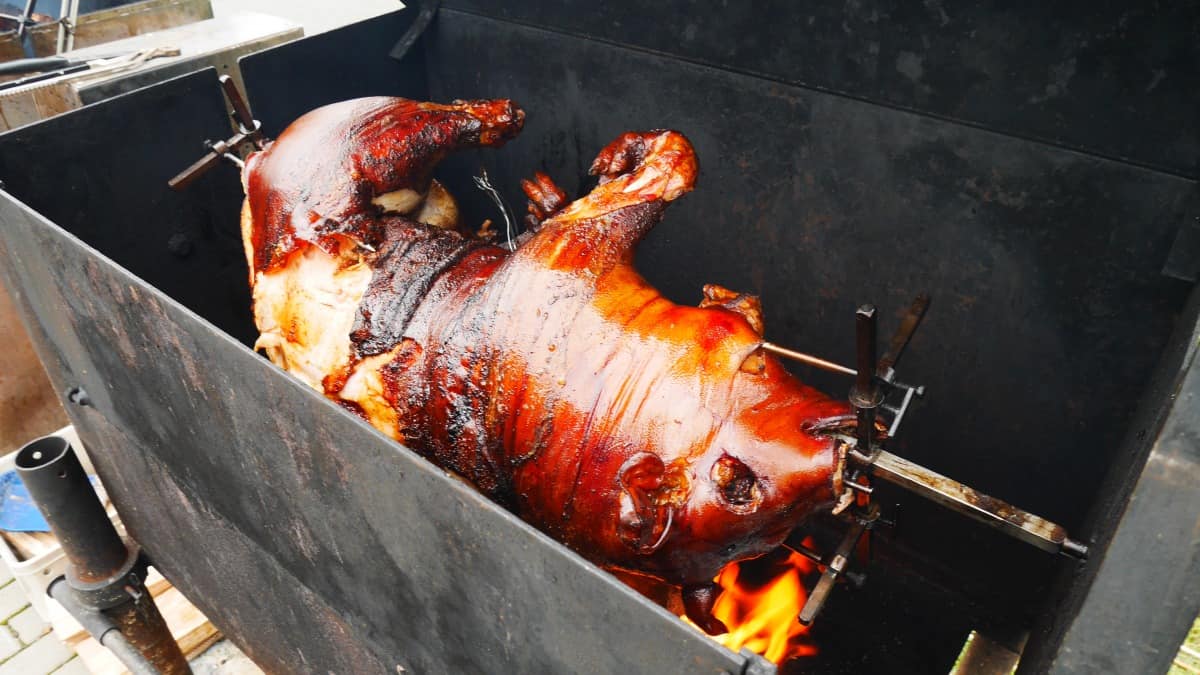
A pig cooker is precisely what it sounds like: a rectangular smoker specially designed for cooking whole hog. Just because this smoker is meant for whole hog doesn’t mean it can’t be used to smoke other meats as well though.
Pig cookers can be fueled by either charcoal or propane. Typically, the charcoal or propane burner would go on the bottom of the smoker, then there would be a heat diffuser between the fuel source and the cooking grates to shield radiant heat so that we can cook indirectly.
There are many different sizes to accommodate different sizes of pigs. A smaller unit (used for cooking suckling pigs) would be large enough for the average backyard barbecue; while a large, trailer mounted unit can be used to cater a wedding.
In addition to being used as a smoker, some models can either lower the cooking grates to be closer to the charcoal or can raise the charcoal to be closer to the cooking grate. Either way, this allows the smoker also to be used as a large grill for steaks, burgers, and chops.
Pros
- Solid construction will last for generations
- Can also be utilized as a grill.
- Even small smokers can cook large quantities of food.
- Are large enough to cook whole hogs.
- Very little moving parts.
- Authentic smoky flavor from wood or charcoal fuel.
Cons
- Are not cheap
- Are very heavy and can be difficult to move
- The cooking grate and food would have to be removed to add additional fire
- Cleaning and maintenance is daunting.
Who are Pig Cookers Most Suited to?
Pig Cooker/Smokers are a dream come true for those who regularly cook large cuts of meat or even whole animals, like pigs. But these aren’t for everyone; they require skill to run well, so are primarily for experienced smokers who have mastered the art of managing heat and smoke levels to perfection.
If you often host big gatherings or events, or if you’re in the business of outdoor cooking, these smokers are perfect for you because of their large cooking capacity.
If you’re a fan of traditional smoking methods and techniques, you’ll appreciate the authenticity and quality that a Pig Cooker/Smoker brings to your outdoor cooking experience, but you have to put the work in to get good results.
Things To Consider Before Purchasing
Before we go into the different categories of smokers, it’s important to ask yourself several questions. The answers to these questions will help you narrow down the right smoker for you.
How Many People Will You be Cooking For?
It’s essential to consider how much food you plan to cook at one time.
Will you only ever just be cooking for your family of four, or will you sometimes have family and friends over to cook for 10 to 12 people or more?
Do you like to host large gatherings of 20+ people? Will you be cooking just one pork shoulder on your smoker, or will you be cooking a feast of chicken wings, pulled pork, brisket, and ribs all at once?
Once you know just how many people you think you’ll be cooking for on a regular basis, or just how much food you plan to regularly cook at one time, you can better decide on the cooking capacity you’ll need in your smoker.
What Type of Fuel Will You Use?
Smokers come in all shapes and sizes; likewise, there are many different fuel sources you can use to cook with:
- Charcoal briquettes
- Natural lump charcoal
- Wood logs/chunks/chips
- Wood pellets
- Electricity
- Gas (propane and natural).
While these are all excellent fuel sources, you have to keep in mind a few things that may rule out you opting for one over the other.
Does your apartment/condo building allow for charcoal fires?
Can you easily get an electrical power source out to where you intend to keep and use your smoker?
Do you have easy access to a supply of wood logs? Or natural gas/propane tanks?
Would you prefer the ease and convenience of almost instantly being able to cook on electricity or gas at a moments notice? Or would you prefer and do you have the patience to slowly build and continuously manage either a wood-fueled or charcoal fire?
Do you want to go through the learning curve and the intricacies of temperature control with wood or charcoal? Or would you prefer the accuracy and ease of merely ‘twiddling a dial’ for temp control on a gas or electric smoker?
While not necessary to nail down your desired fuel choice right away, it will help you rule out some different styles of smokers.
Ease of Use
Some smokers are easier to use than others.
Some utilize “set it and forget it” technology, others have a learning curve that will take you a few cooks to master, and others will have a learning curve that even after you’ve mastered them will require you to babysit constantly no matter how many cooks you get under your belt.
If you’re the type of person that doesn’t want to have to keep an eye on your grill, or wants to be able to put your food on in the evening and get a night’s sleep while it’s cooking at a set temp, you’ll want to consider a type of smoker that doesn’t require babysitting.
If you think you’ll enjoy the hands-on fun of having to control a fire, and to tweak and manage temperatures manually, then look for a charcoal or wood burning option.
If you want ‘set and forget’ hands off accuracy, where you can start a cook, set a temperature and then walk away for hours at a time, then go for an electric or pellet smoker.
If you want something in between, then you might want to opt for gas.
Do You Want to be Able to do Other Things Besides Smoke?
Some of the choices listed below can do things besides smoking.
Many can sear with high heat for cooking steaks, chicken, and chops. Others can even bake bread and cook pizzeria quality pizza.
If you already own a grill, you may just want a standalone smoker.
Make sure you know precisely what types of cooking you’ll want your smoker to do before looking at options. Do you want a single job smoker, or a multi-purpose grill, smoker, and outdoor oven?
Do You Want it to be Portable?
If you’re like me, you may sometimes be invited to friends’ homes and cabins and want to be able to take your smoker with you. Or you might want to take it camping or on vacation.
To do this, you’re going to want a smoker that can easily be transported in the bed of a pickup, or in the trunk of a car.
Knowing up front if you’re going to want to travel with your smoker, and knowing your limits on how you can transport it, may make this decision a little easier.
What is Your Budget?
Smokers can be purchased for as cheap as $100, and the expense can easily go up into the $1000’s.
Like anything we buy, typically the more we spend, the better the quality will be. Knowing what your budget is will help wipe out some of the more expensive items before you even begin to look and make the final decision easier.
Be realistic. Set a budget, and stick to it, and don’t be swayed by higher priced models that you really cannot afford. You can create fantastic food on models costing just a couple of hundred dollars, so don’t feel pressured to overspend.
However, personally, I believe that the more frugal spender buys quality once, rather than budget versions again and again. Paying for quality at the start can save money in the long run by avoiding maintenance or ‘replacement’ costs when poorer quality models begin to fail in a few short months or years.
Conclusion
We hope this deep dive look into all the many different types of smokers has made things a little easier for you to decide which kind is right for you.
What did you think? Did we miss anything? Make sure to leave us a comment down below with your thoughts.
Happy smoking!


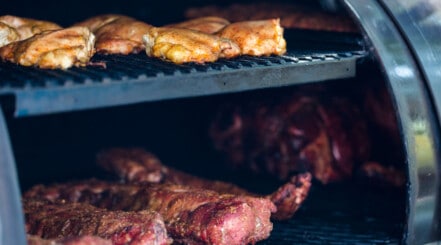

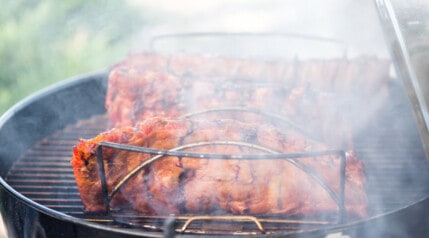

This looks like you covered all the bases. Only three things I can see to add.
First … Write down what your goals and objectives are in outdoor cooking. It helps you with #2.
TWO …. Know your budget. When you don’t know it, you become like me, buying things with no working knowledge. As a tip, I had a budget of $4,000. I was focused on buying one expensive gas grill. But two months into my thinking of buying one, is it possible I can buy two grills instead of one? The answer is YES. I was able to buy a nice night lit gas grill and an aluminum Kamado (Charcoal). This gives me the versatility I need as an outdoor cooker.
Lastly THREE … Spend time on learning your grills. Rome was not built overnight. I have noticed this about my cooking. Each grill as noted here has PROS and CONS. That is just the way they are made. But if I do not experiment and practice, I may never get to be like Aaron Franklin.
Some very good pointers, Ed, thank you 🙂
Regarding number three: I can’t agree with you more! I’ve been guilty of buying new grills and smokers before mastering the ones I already have (and of course you never stop learning.) If you check my about page (it’s in the main menu) you can see me with ‘most of’ my outdoor cooking equipment. The wood fired oven I’m just not too good with, and this comes down to inexperience mostly. I bought it in a rush, wanting to be able to cook pizzas at home, bake my own bread, but only use it maybe twice per month. Results have been good mostly, but my temperature control with it isn’t the best, and that’s because I’ve not used it enough to master it.
What’s the ‘metal kamado’ you’ve bought? Is it the ‘Blaze Kamado’? I’d be interested to hear how you get on with it, as I don’t know anybody that owns one.
On the subject of Kamados, I have a new Kamado Big Joe Version III arriving this Friday, super looking forward to it! I’ll post a cheesy pic of me with it when it arrives, haha.
As promised: Cheesy pic of me with the new Kamado Big Joe version III when it arrives. Just built it up and used it for the first time today:
Thank you for sharing, Mark. I will need to see your setup and workflow.
The Blaze Kamado is 1.25″ thick Aluminum. I did not do enough research on this product. Most of the YouTube advertisements is fluff which convinces people to buy. I only cooked one item so far, a Grade A Wagyu from SRF. I learned my lesson well on that one. Don’t buy an expensive Brisket to start. But the ones at Sam’s Club looked oxidized and been on display for a week. Oh, well. For the most part, it was good, but I never got to taste the burned ends. They were … As you can say … Burned. I had a terrible time managing the fire. I thought by Chef Tony’s YouTube … I can just set it and forget it. Well, the water pan was dried after 4 hours and the temps never went above 340. The video was deceiving. The grill for the most part was small.
I am planning to buy an offset smoker from Lone Star Grills — this one here … https://lonestargrillz.com/collections/smokers/products/mini-insulated-cabinet-smoker . I figure this will help me get to an all-night sleep n cook lifestyle. Not only that, but I can cook several things instead of just one item on the Kamado.
First and foremost, I need to learn the Kamado. I committed myself to it by buying it. When I get that down perfectly, then I will move onto LSG.
So … you can see, I blindly jumped into this, but it wasn’t all that bad. I have been cooking on the Blaze LTE 4 burner gas grill too and even tried smoking on that with a Blaze smoker box. Lots of things to learn. I have not even used the rotisserie for the kamado. Yes, rotisserie on the kamado too. It’s great that summer is here for outdoor cooking.
Yes, I would like to see what you are doing too and will check out this site more this weekend. I can learn more from you as it looks a lot like you have really checked out these different types of grills. I can tell from your research on this web page. Greatly appreciate it.
Yes, like all grills kamados have a bit of a learning curve. But honestly, of all the types of grill and smoker I’ve ever had, it’s my favorite and gets the most use. Thing is, as an out-and-out grill, a weber kettle is probably better. As an out-and-out smoker, a WSM is different and in some ways better. For doing ‘smoke roasts’ at medium to high temps, my wood fired oven is somewhat better. BUT…this all marginally so, and as a ‘Swiss army knife’ of grills, a kamado can do just about everything, and does it all damn well (temps from 175f to 750f, smoke, roast, bake, grill…so versatile). And once you do learn temperature control, you get to a stage where you can light just the right amount of charcoal, and set the vents a certain way to hit a target temp and keep it there for so many hours without touching it.
Having said that last bit though, I have always had a flame boss 300 until recently, when I upgraded to the 500. So I can and do set up overnight cooks controlled by the flame boss. May as well sleep easy knowing there’s zero chance of things going wrong.
By your comment: Do you use a water pan in your Kamado? I never have because by design the cooking chamber remains so moist during the cook I’ve just never felt or had the need. I do sometimes use a drip pan, but only to keep drippings off the deflector plates.
That lone star grill cabinet looks a serious bit of kit! You don’t mess around, do you? Haha.
Excellent content. Thanks, for the thorough explanation of it all!
Thanks, Adriano. It’s always nice to hear people get benefit from what we put out 🙂
I have a Weber Genesis II 330 and I grill, barbecue, rotisserie, and smoke. Smoking a brisket I use 1 burner for indirect heat and 2 A Maze N pellet smokers that give me 10 hours of smoke. These A Maze N and similar pellet mazes have changed the smoking game for me, I almost never use my Weber Kettle Grill anymore. I use this set up with no heat for cold smoked salmon when the outdoor temp is less than 75 degrees.
I am trying to learn more about the rotisserie smokers Verse the propane tank style smokers? The pros and cons and anything you could add for advice would be awesome.
Mmmmmmkkkkkk
Rotisseries typically spin in grills rather smokers, though you do get them as ‘extras’ in kamado style smokers and what not.
I love rotisserie, use them in my charcoal weber mostly. I recommend doing the same, buy a grill where you can buy the rotisserie as an add-on for your standard grill (charcoal or gas). The more ways I can cook outside, utilizing different techniques, the better. Some of the best birds you’ll ever cook (chicken, guinea fowl, etc.) and great for many other roasts. And picanha favorite.
Anyway, what is it specifically you’d like to know about them?
Thanks for one of the best resources comparing smoker styles. I will say that if you want to call yourself the ultimate guide, I think you have to also keep your eyes on the ball here. The entire point of smoking is to get a quality product out in the end, and there are big differences among the different styles here. For example, an electric smoker may be easier for beginners, but the quality of smoke you get is also for beginners. I think many of your readers are probably wondering where the point of diminishing returns is in terms of choosing a style of smoker that may require more investment or babysitting, but produces a higher quality product in the end.
Hi Matt. Thanks, for your comment … It’s a fair point! We are currently working our way through existing content, to update and improve things. I’ll make a note to add in ‘flavor profile’ to each smoker type when we get to this one.